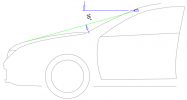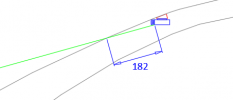Dashmellow
Well-Known Member
- Joined
- Sep 22, 2013
- Messages
- 18,276
- Reaction score
- 18,918
- Location
- Uncanny Valley (●_●)
- Country
- United States
- Dash Cam
- Umpteen
The lens hood in question as presented by the OP is essentially a different concept as compared to the Performance Data Recorder which is not optimized as a general purpose dash cam.
For one thing, it is angled quite high with far too much sky for typical dash cam usage. BTW, the previous examples above are all from the first 2015 iteration of Corvette's Performance Data Recorder. The more recent iteration below seems to have eliminated the vignetting and reflections of the earlier version.

One way or another, a lens hood is not a practical approach to eliminating windshield reflections, although I maintain that it could be made to work assuming one could tolerate the size of the thing.
For one thing, it is angled quite high with far too much sky for typical dash cam usage. BTW, the previous examples above are all from the first 2015 iteration of Corvette's Performance Data Recorder. The more recent iteration below seems to have eliminated the vignetting and reflections of the earlier version.

One way or another, a lens hood is not a practical approach to eliminating windshield reflections, although I maintain that it could be made to work assuming one could tolerate the size of the thing.




